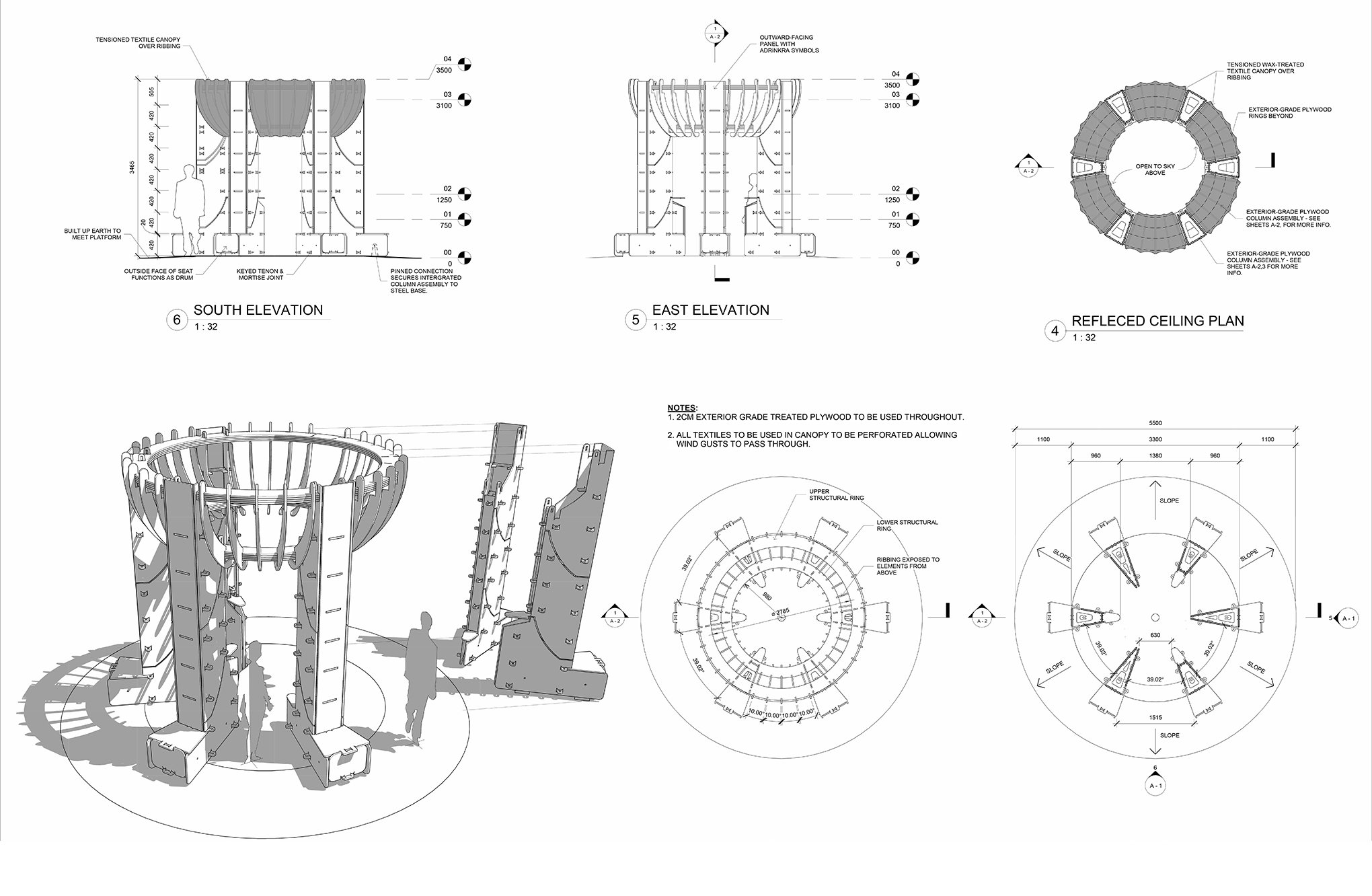
The Construction
“ReCall & Response evokes the form and function of West African drums—symbols of communication, memory, and resilience.”

Venice Architecture Biennial 2025
Construction Work Description
The construction took approximately 4 days to complete as an assemblage and we plan to disassemble the pavilion within a day and move it to another location for assemblage within a community that can use the project for identity and play.
With our construction using modular, sustainably sourced timber, ReCall & Response evokes the form and function of West African drums—symbols of communication, memory, and resilience. Designed for disassembly and reuse, the pavilion embodies principles of sustainability and adaptability. Interactive acoustic elements invite visitors to engage in a dynamic “call and response,” transforming the structure into a performative and communal space. Developed in collaboration with Morgan State University, Tuskegee University, Talking Hands, and R3B, the pavilion reflects a collective, transnational process rooted in cultural preservation and innovation. Digital storytelling, created with the Pan African Heritage Museum in Ghana, explores restitution, creativity, and the enduring legacy of the African Diaspora. More than a static installation, the pavilion is designed to travel and serve future community projects, reinforcing its role as a living archive and cultural bridge. Through material, sound, and story, ReCall & Response channels the rhythm of shared heritage into architectural form.
Materials and Construction
• Sustainably sourced timber ply 3 cm thick
• Wood joinery connections gives the imagery of (The Mosque of Djenne, Mali
(https://whc.unesco.org/en/list/116/), Grand Mosque, Burkina Faso
(https://www.bradtguides.com/the-best-mosques-in-west-africa/)
• West African printed fabric
• Metal flooring
• A 15 cm wood base underneath the metal is constructed and bolted to the
pavilion to stabilize the structure. No foundation is allowed the penetrate
the garden grounds.
The pavilion also serves as an educational platform in collaboration with Ghana's Pan African Heritage Museum. Through immersive displays and digital elements, it explores the restitution of cultural artifacts displaced during colonialism and highlights the enduring creativity of African communities. Acting as a satellite venue fosters critical dialogue on historical injustices and the future of cultural heritage.
A collective effort underpins the pavilion's creation, bringing together Morgan State University and Tuskegee University's Robert R. Taylor School of Architecture and Construction alongside the Italian organization Talking Hands, which employs immigrants in textile design, and the Italian sustainable design firm R3B. This collaboration bridges global communities with shared cultural preservation, innovation, and sustainability values.






